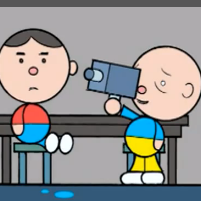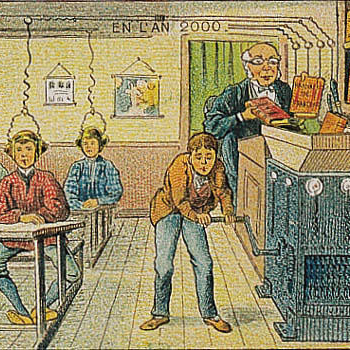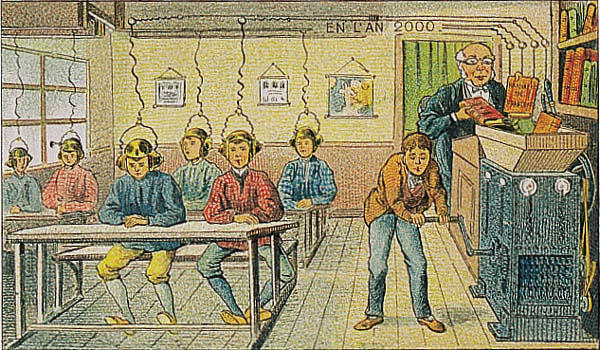This Storify essay is a first, rough draft of history – a social document for future historians. Text, image, video and tweets from the initial reaction to the event. (March 10, 2011 GMT-8) ~ I regret that my first use of Storify was to document such a tragic event. My prayers go out to all those impacted by the earthquake and tsunami. I hope to be able to tell happier stories in the future.
Kids Explain 4 Strategies for Making Math Come Alive
During this summer program students entering eighth grade were coached by an intern in ways to investigate and talk about the math in their lives. Here's the 4 strategies the students used:
 1. Look for math in real life – Nic ponders the permutations in picking out his clothes.
1. Look for math in real life – Nic ponders the permutations in picking out his clothes.
2. Frame your experiences as word problems – Shanice eagerly monitors price changes in a coat she wants to buy. (Spoiler alert: she gets it!)
3. Try out different ways to solve problems. Nik crafts a way to determine his baseball batting average.
4. Explain and share your thinking. Shaniece describes what they do when one them gets stuck on a problem.
Watch the video to hear what they discovered in their own words. "I see math when I'm walking down the street…. I see math in myself."
For more information on the project click here.
Hat tip to Matt Karlsen
Student Personal Tech Devices in the Classroom? A Cartoon Parable
“The Cameraman” – From Cartoonist Chris Ware, animator John Kuramoto and Ira Glass of This American Life. First grade teacher, Jeff Potter tells Ira about an art project and the impact of personal “technology” in the classroom.
“The camera really changed the way we behaved…. We lost our humanity.”
Were the cameras really responsible for the student insensitively to the fight? Was banning the cameras the only alternative the teachers had? I don’t know. I wasn’t there.
But it does strike me that the cameras were also a catalyst to creativity, collaboration, and powerful student engagement. Is this a parable about balancing the benefits and liabilities of cell phones and other student personal technology in the classroom?
Hat tip to David Kwasigroh
How to Use Web 2.0 to Teach Literacy Strategies to Struggling Readers
This week I’m heading out to work with intermediate (grade 4-6) teachers on strategies to assist struggling readers.
We’ll focus on three core skill areas central to the Common Core standards – defining, summarizing and comparing using my guide to 18 Strategies for Struggling Readers. (free PDF file)
Plus I’ll introduce some great websites that they can use with the strategies – the new digital literacy meets the old text literacy.
There are two key elements in each skill area that can help students construct meaning and build background knowledge.
Defining
- Before the formal definition has been introduced, students should be asked to make connections between their prior knowledge and the term.
- After the term has been defined, students need activities to more deeply process the term. The focus should be on descriptions, not definitions
Summarizing
- Students should be asked to make their own judgments about what’s important to them (instead of just repeating the details the teacher highlights).
- Students will be able to more readily summarize, if they are asked to share what they’ve learned with an audience other than the teacher. They need use a text structure to organize their thinking.
Comparing
- Students should develop the comparison, not simply repeat the model that we present to them.
- Student should be asked to share what they learned from the comparison. They need use a text structure to organize their thinking.
I’ve selected some Web 2.0 sites that will enable students to use the strategies in a variety online settings. I’ve picked free sites that have easy learning curves. For example, we will use One Word to negotiate meaning through images, explore summarizing text structures with Five Card Flickr and design comparisons with Wordle and Books nGram Viewer.
Working with words
- Explore word frequency with Wordle
- Search published works with Google Books Ngram Viewer
- Foster writing skills with One Word writing prompts
- Expand vocabulary and word choice with TelescopicText
Working with words and images
- Create mindmaps and graphic organizers with Bubbl.us
- Drag and drop words to create poem based on a photo with Pic-Lits
- Foster visual thinking and creative writing with Five Card Flickr
Kid-friendly search sites
For more ways to use Web 2.0 sites in the classroom
download a free PDF at my post
“87 Free Web 2.0 Projects For the K-12 Classroom“
Image credit flickr/Mike Licht
Vintage 1910 French Postcard Predicts Bill Gates and NCLB
What an uncanny prediction of contemporary American education – digitized information being force-fed into bored students. Looks like a vision of one of those computerized test prep programs guaranteed to bring up the standardized test scores.
But I’m not sure – do you think that’s educational savior - Bill Gates, or an overpaid public school teacher unwilling to give away his collective bargaining rights?
For another satirical look at the current education scene see yesterday’s post –
“John Stewart “Teachers are Destroying America“
Click image to enlarge
Part of series of images (circa 1910) attributed to French artist Villemard in which he predicted Paris life in 2000. Hat tip to D’Arcy Norman
For another uncanny prediction, see my post “First Google Map Discovered – Created in 1652”





